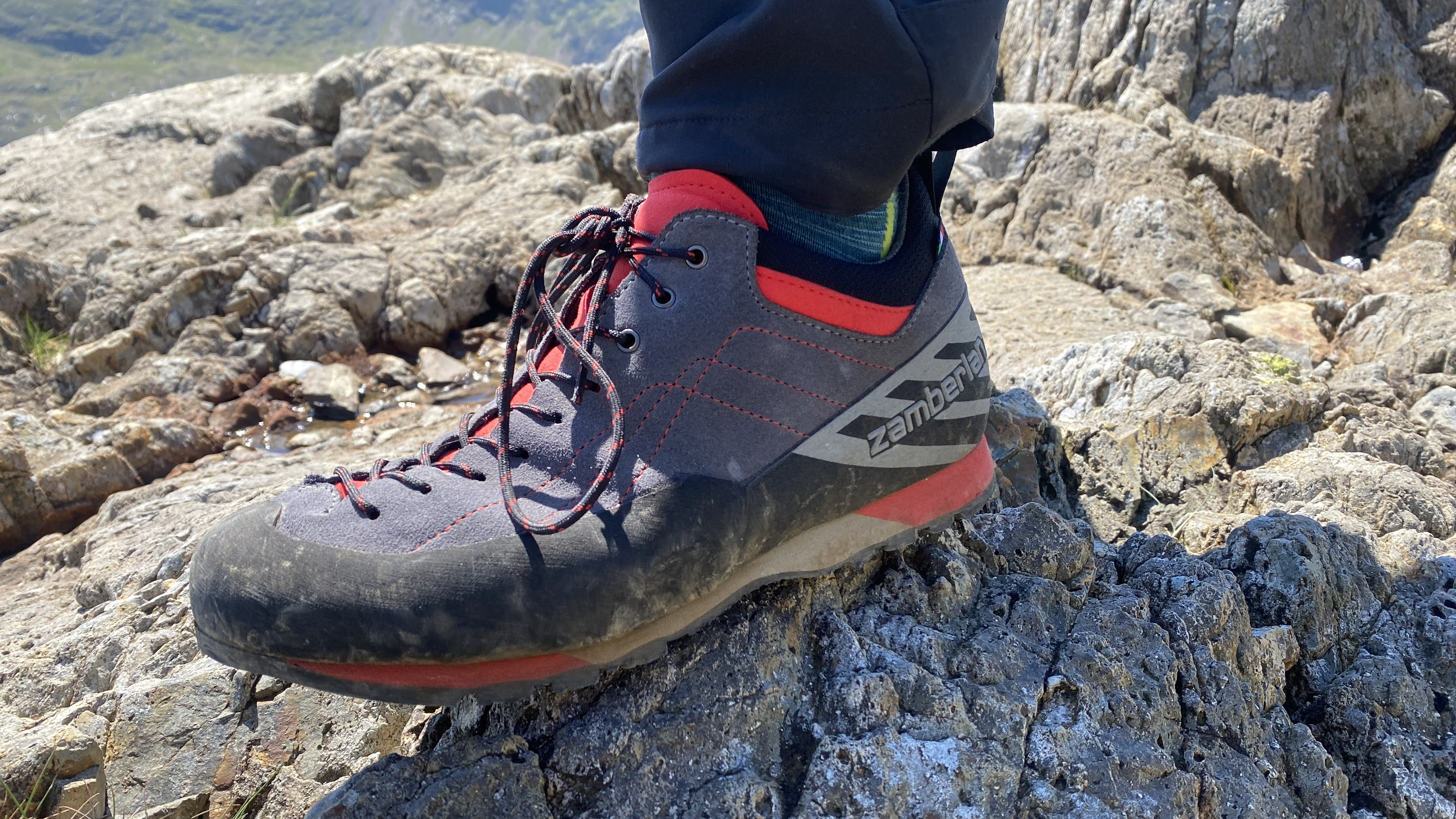
If you’re going to call an approach shoe the El Cap, it’d better be a pretty accomplished climber. The name of these great approach shoes from Italian technical footwear specialist Zamberlan gives an obvious clue that they’re towards the climbing end of the approach shoe spectrum. Developed in collaboration with a group of professional mountain guides, the El Cap (available firect from Zamberlan) is intended for climbers and those taking on technical via ferrata adventures.
For the uninitiated, approach shoes occupy the middle ground between hiking shoes and climbing shoes, offering some of the performance and grip on rock of the latter, with the comfort and wearability of the former. Founded in 1929, Zamberlan’s handmade philosophy and drive for quality has garnered it a reputation for quality mountain footwear, with classic Italian style. I was excited to try the El Caps out on scrambles in North Wales’ Eryri (Snowdonia) National Park.
Meet the reviewer
First impressions
I recently tested and reviewed the Zamberlan Salathé GTX approach shoes, which are designed for trails as well as rocky steps, arêtes and buttresses. A side-by-side comparison reveals that the El Caps are indeed tailored more towards climbing. There are nine eyelets for more precise lacing, as opposed to seven on the Salathés; the protective rubber rand is beefier; and the ankle cut is subtly lower on the El Caps.
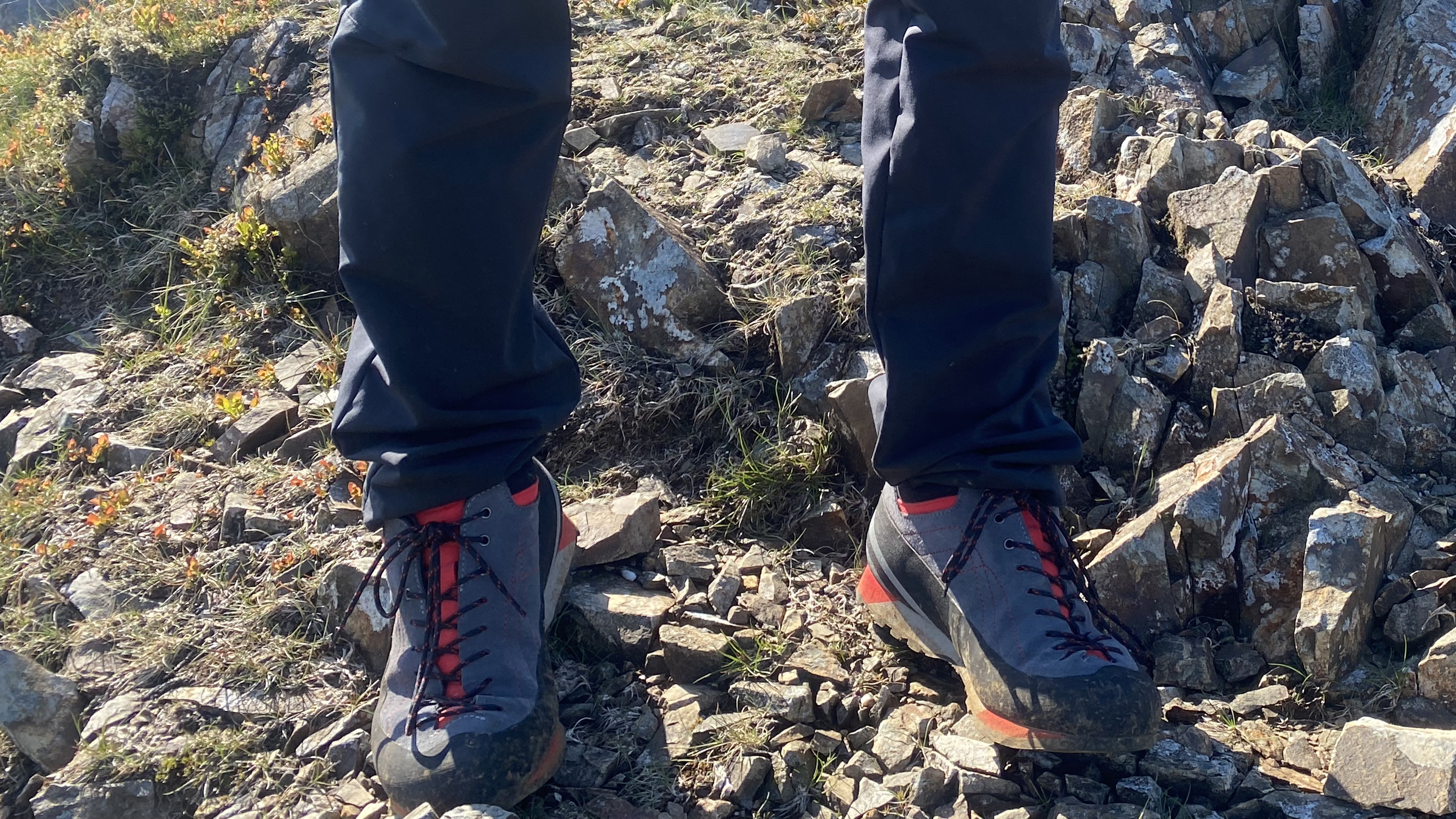
It's obvious that the El Caps are shoes are designed more for the vertical realm than the horizontal one
Alex Foxfield, Mountain Leader
However, the most obvious difference is in the lug pattern on the Vibram Ferrata outsole. With relatively flat triangular lugs and ample climbing zones (flat rubber sections for maximum traction on rock) at the toes and heel, it’s obvious that the El Caps are shoes designed more for the vertical realm than the horizontal one. Standard trails wouldn’t suffice for this test. I’d need to get myself to some pretty technical ground.
Before we get into the features, a word on the El Cap’s aesthetics. The upper is a delightful suede, with all the grace seen in Scarpa’s Crux, for me the most stylish of all approach shoes. However, this simple elegance is hijacked by a striped pattern on the wrap-around rubber rand around the heel, which puts one in mind of a zebra. Maybe it’s just me, but I’d have been more enthusiastic about wearing these to the pub after a climb if Zamberlan had kept it simple. Less is often more.
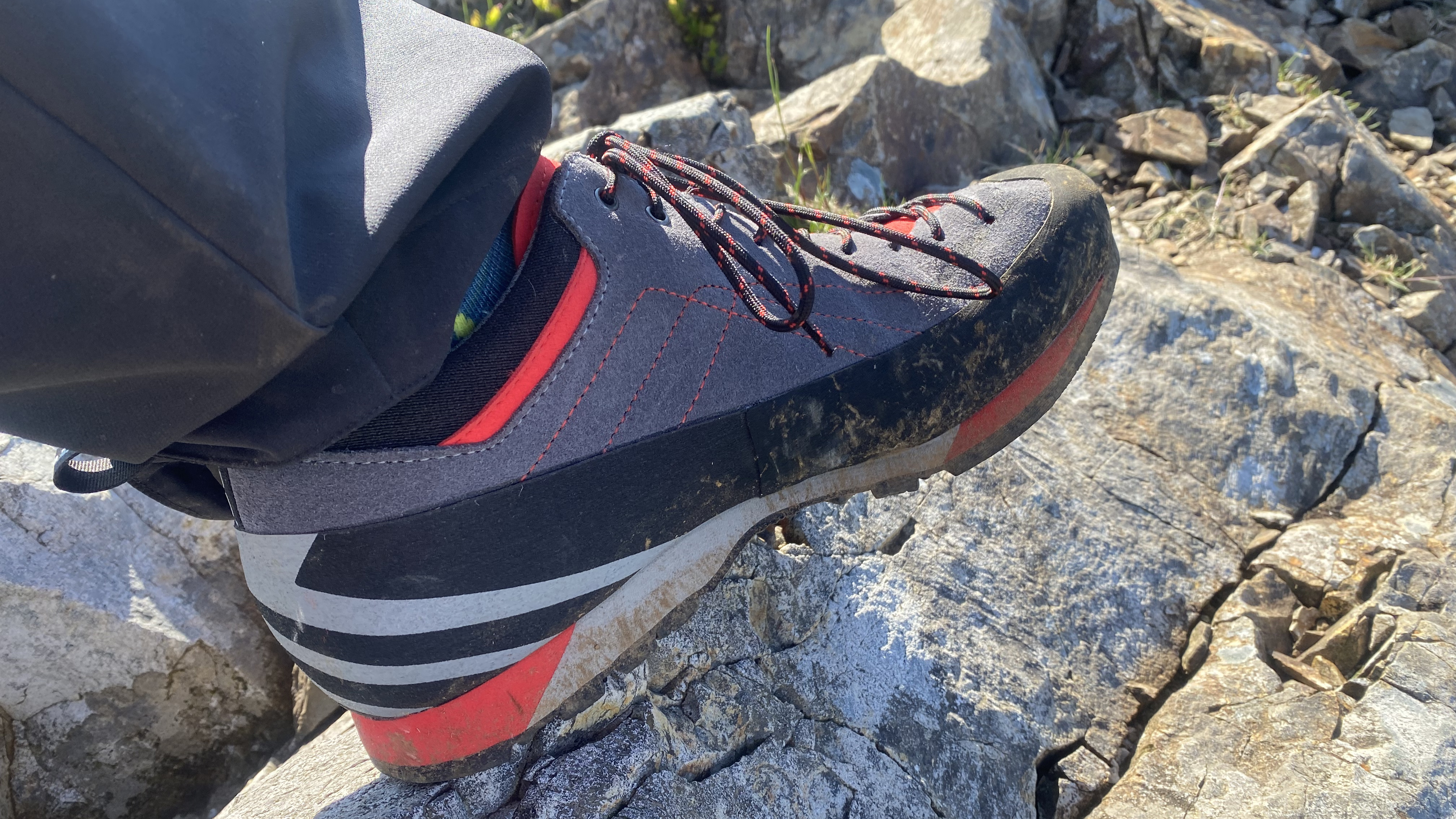
Features
RRP: $260 / €209 (EU)
Weight (per shoe): 450g / 15.9 oz
Materials: Hydrobloc Suede upper; Tessuto lining; nylon insole; double density molded EVA midsole; Vibram Ferrata Megagrip outsole
Colors: Grey/Red
Best for: Via ferrata, scrambling, easier climbs
The El Caps are narrower than more hiking-orientated approach shoes and feature a tapered toe to aid accuracy when edging. It’s also pretty snug around the heel, while climbing shoe style, ankle-to-toe lacing makes it easy to tailor the fit for maximum precision. The mid cut at the heel protects the ankle and there’s ample padding here too, for climbing comfort – two words that don't always go together.
As you’d expect from Italian manufacturers, suede is preferred to any kind of synthetic material in the upper. Hard-wearing, flexible and breathable, it adds class and comfort to the shoe – though it does make it unsuitable for vegans. The upper is treated with Zambleran’s Hydrobloc, which provides water resistance. Better still, when its power to repel water starts to suffer, you can care for your shoes by washing it and reapplying Hydrobloc to restore the repellence.
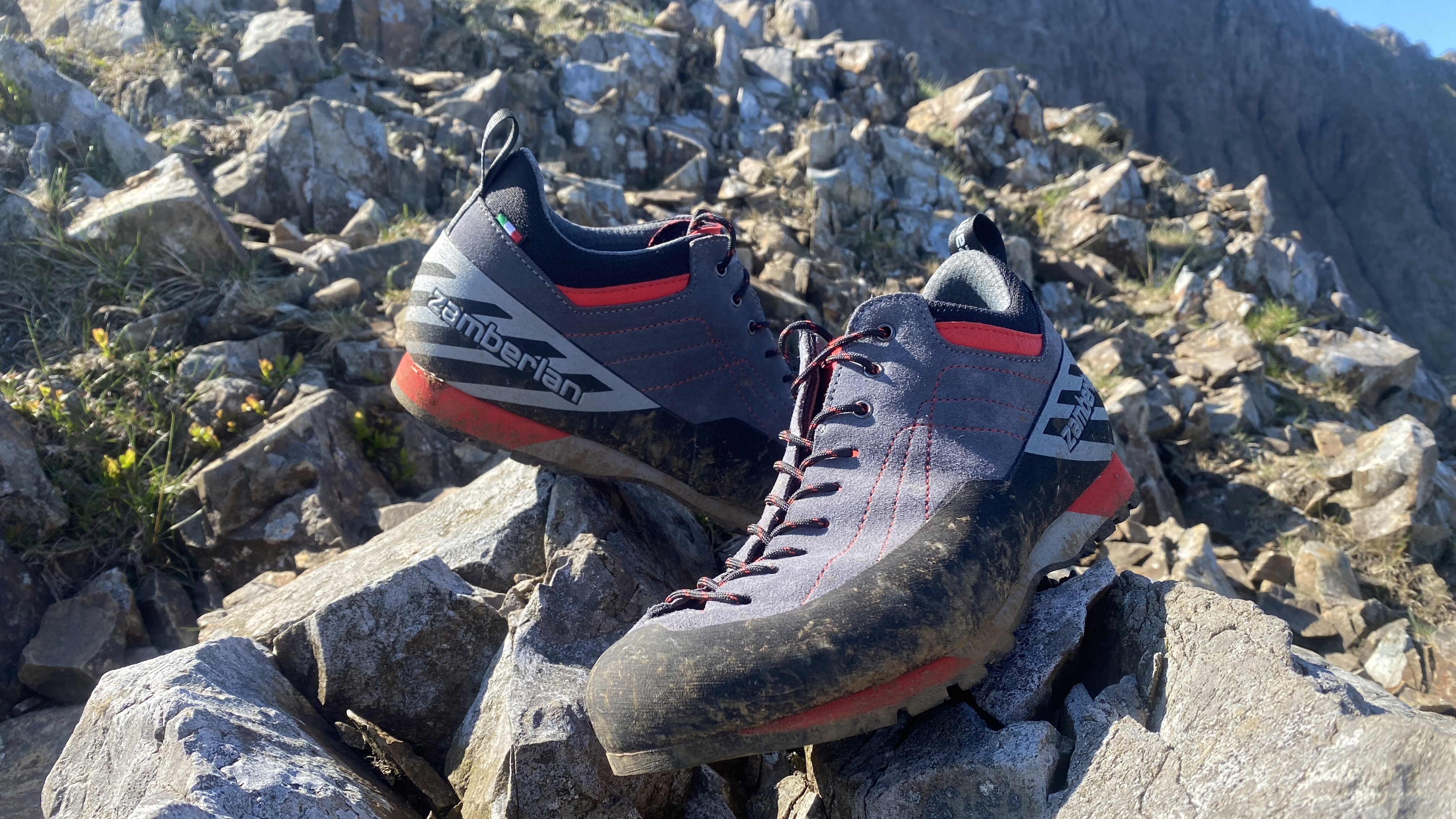
The nylon insole is prominently ridged, towards the heel, providing additional cushioning. In terms of the shape, the shoe is based on Zamberlan’s ZTEC Technical last. This features reduced volume in the instep and a downturned shape, with high volume in the foot flex area. The same last is used in many of the brand's mountain boots, where they say that a pronounced anatomical fit is beneficial.
Your foot gets so much protection here that it’ll think it’s a VIP. The rubber rand is particularly extensive, coming up high at the heel and, at the other end, providing an effective shield for the toes. This all serves to shield you from rock abrasion and should mean that the El Cap is nicely durable too – time will tell.
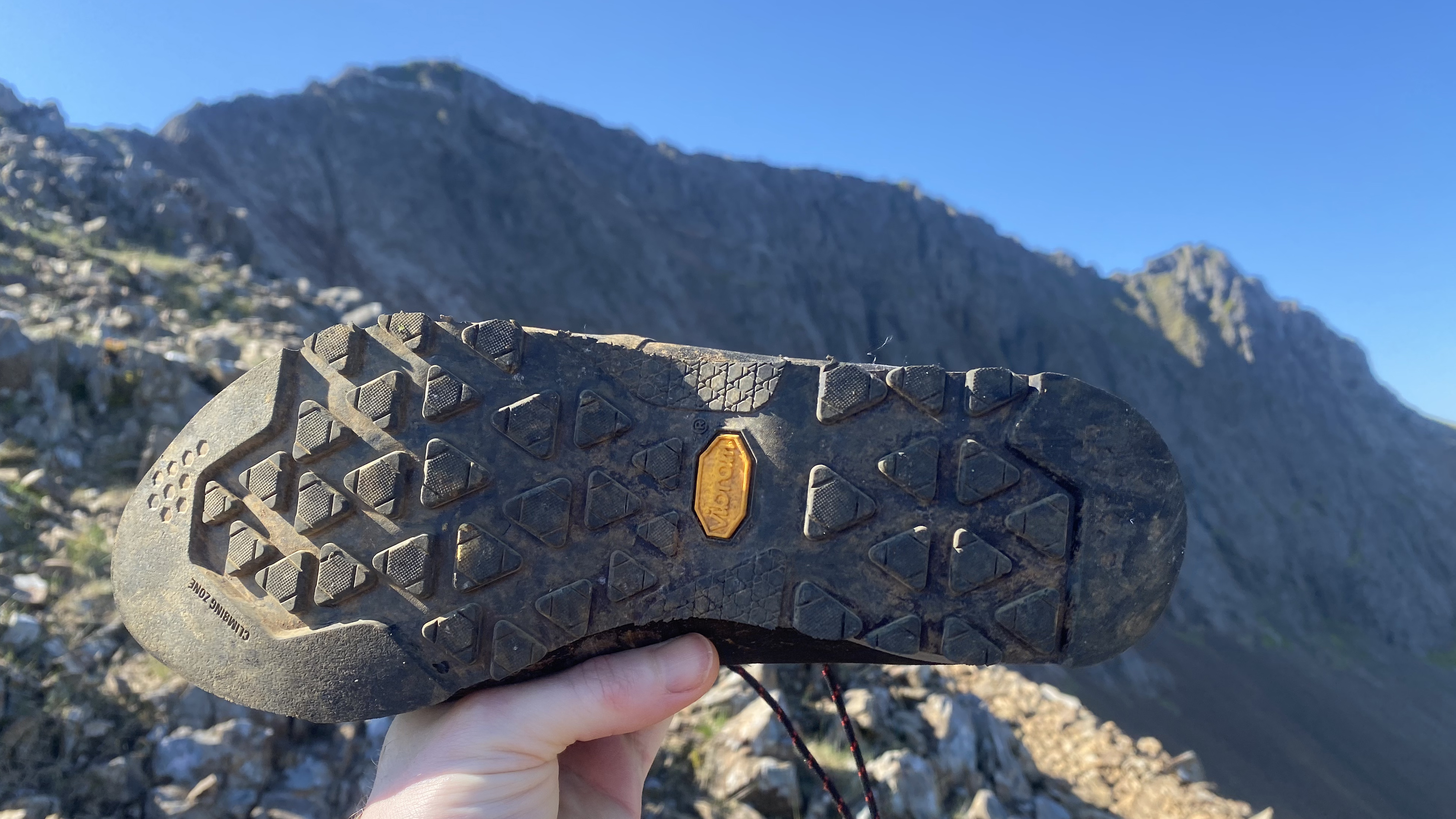
As seems to be de rigueur in approach footwear these days, Vibram’s Megagrip compound is put to use in the Ferrata outsole. Providing traction on both wet and dry rock, it’s the ideal material where mountain scrambling is concerned. The outsole is also noticeably more rigid than on most, not quite as stiff as a winter hiking boot, but enough to point to its high technical capabilities.
The lug pattern on the Ferrata outsole is interesting. Zamberlan says that the triangular lugs create high levels of ‘directional traction, braking and self-cleaning drainage channels.’ There are large areas of flat rubber at the toes, in particular, and at the heel. These provide greater traction when smearing, a climbing term for when you haven’t got an actual foothold but simply rely on the friction between your footwear and the rock to progress. Many technical scrambles and easier climbs feature angled slabs, which can be fairly featureless, so having footwear that can cope with that kind of terrain is essential.
On the rock
The scrambling mecca of Eryri (Snowdonia) National Park in North Wales was the testing arena. From the gothic, angular rock of the Glyderau range to the famously narrow ridges of the Yr Wyddfa (Snowdon) massif, I found plenty of classic lines to test the El Caps out on, as well as plenty of trails to assess their suitability for hiking days.
The tapered toe shape, combined with its high levels of protection meant that I was able to wedge my foot into cracks to create solid footholds, while the rigidity of the sole meant they held in place too. It’s not all about brutish wedging either; the narrow profile allows for precise footwork too – like an armored pointe shoe. I was able to make use of small edges that would have been off the cards wearing less technical footwear. The flat rubber towards the toes also held superbly when smearing on dry slabs.
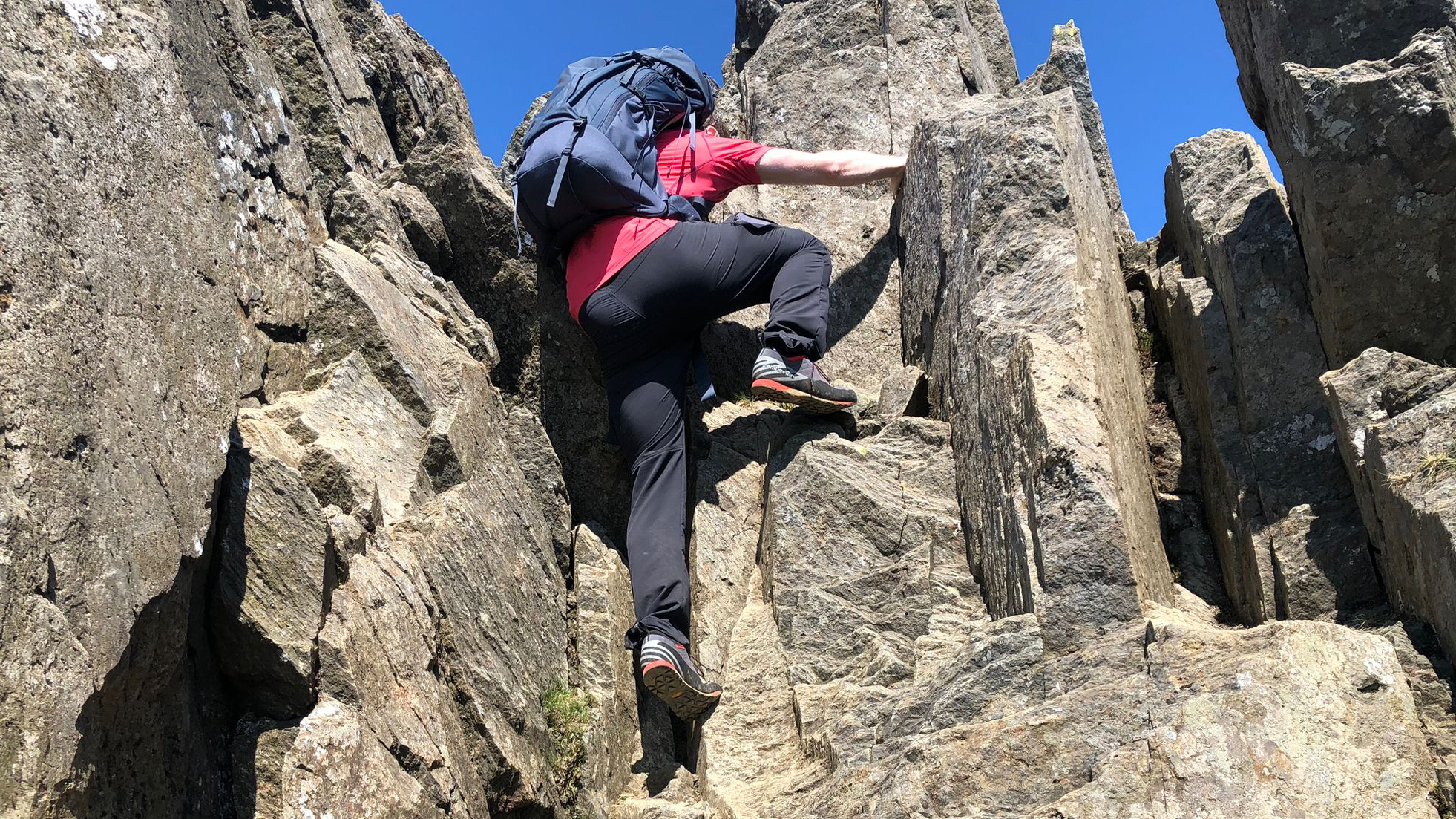
In short, the El Caps are very accomplished scramblers and gave me loads of confidence and precision on trickier sections.
On the trails
A downside to narrower approach shoes is a lack of stability on the trails, especially compared to wider hiking shoes or boots. As mentioned, I’d previously tested Zamberlan’s Salathé GTX approach shoes, which were designed as “car to summit” shoes capable of taking on the trails. However, I found that I had to be extra careful with my foot placements when hiking on uneven trails, as it felt as though my ankle could go if I wasn’t.
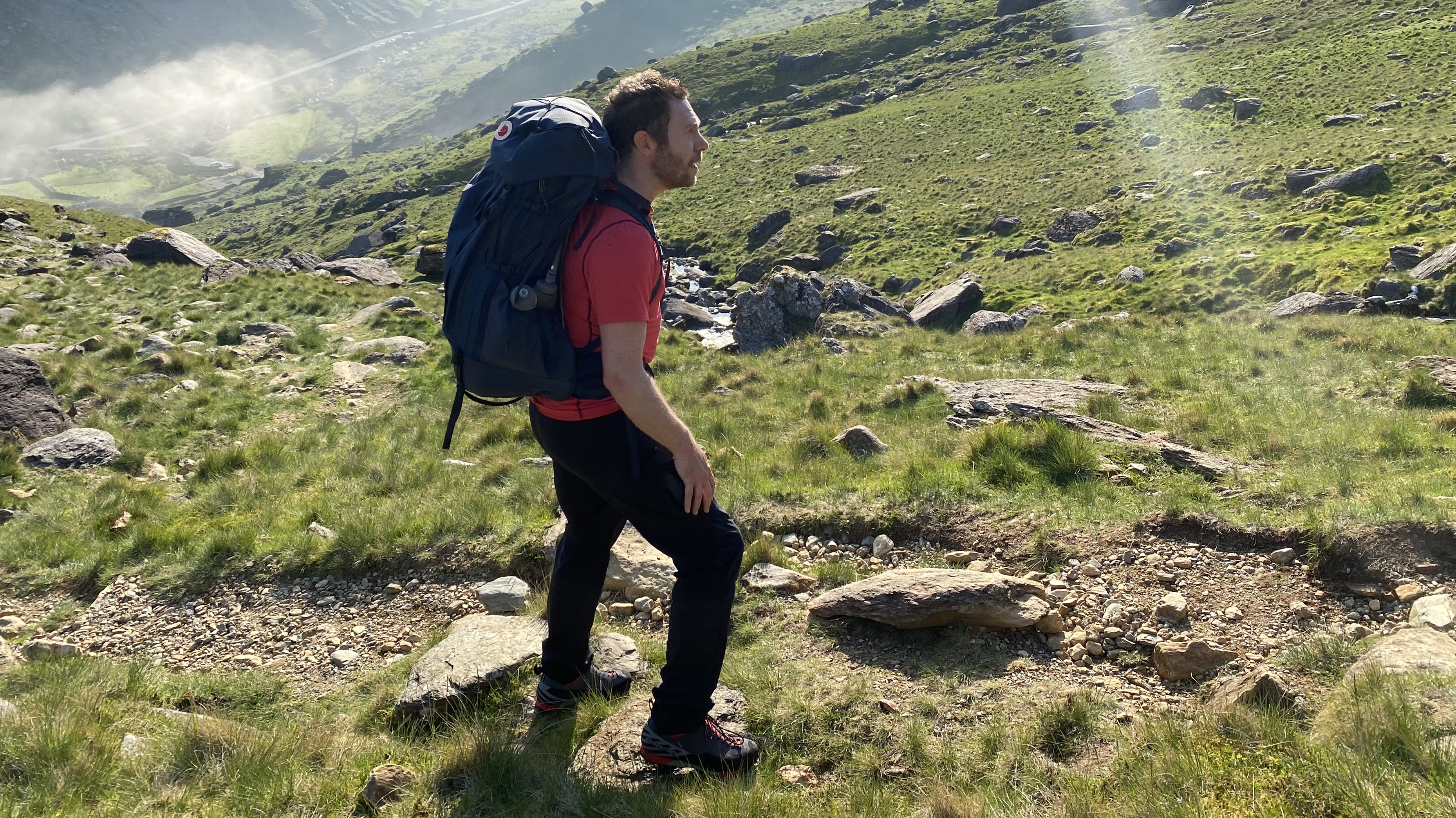
The El Caps, which aren’t as tailored towards hiking, have the same issue. Don’t get me wrong, I’ve done plenty of hiking in them without injury. However, I did have to catch myself a few times during the test period having placed my foot down and felt it starting to twist at the ankle. Of course, this can happen with hiking shoes too, but I do feel the need to be extra vigilant when hiking in these kinds of approach shoes.
Having said all that, the El Caps were just as comfortable to wear on the trails as they were when taking on long scrambles. I’d recommend them for climbers and keen scramblers but for longer hikes, even those with scrambling sections, I’d opt for something with a wider outsole and more thus stability, such as Aku’s Rock DFS GTX.







